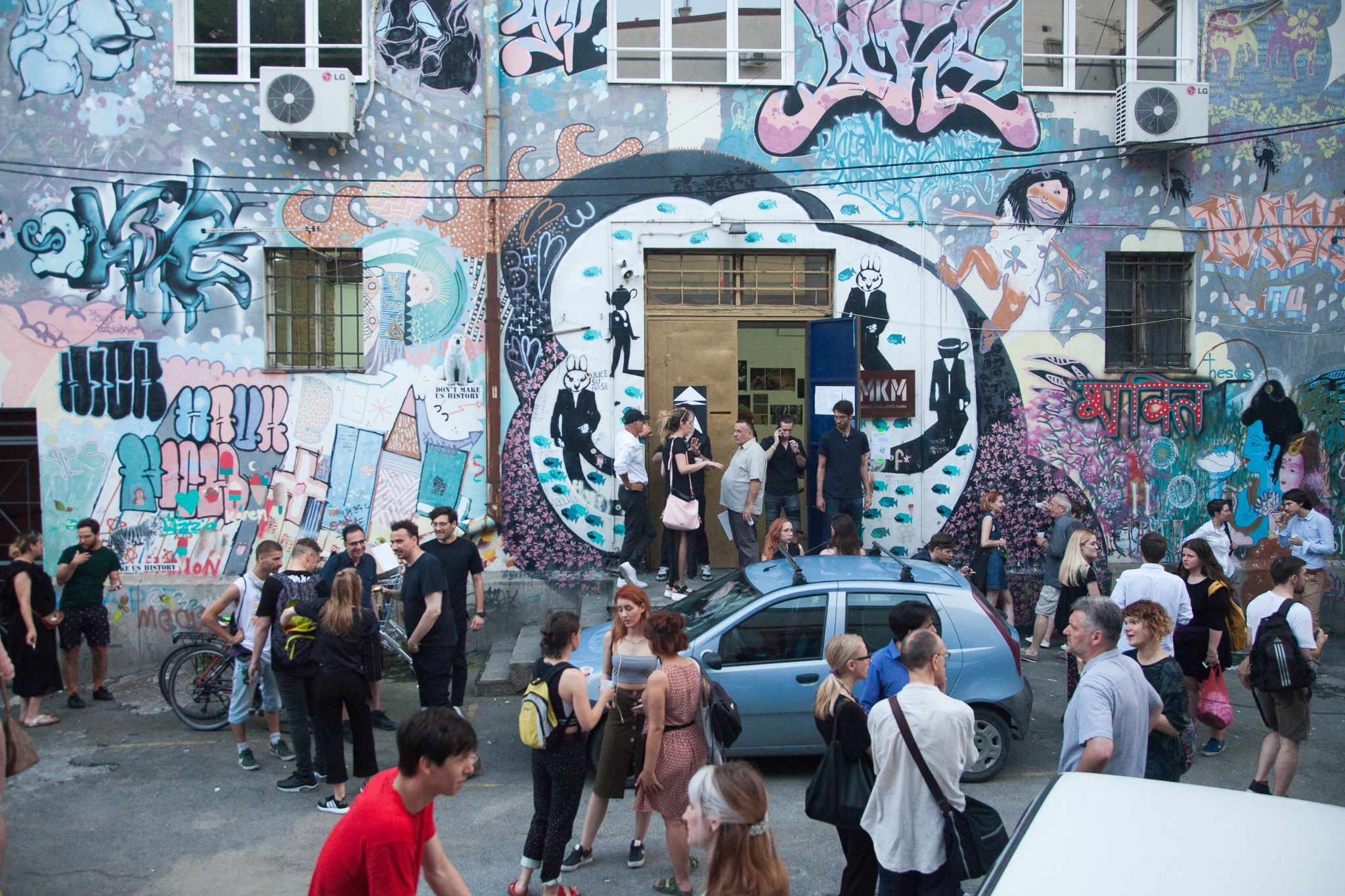Author: Ilhan Ozan
PhD Student in History of Art and Architecture
On October 17, the Department of History of Art and Architecture and Pittsburgh’s Office of Public Art held a public lecture on Serbian contemporary art by art historian and curator Milica Pekić, photographer and visual artist Luka Knežević Strika, and architect and urban planner Iva Čukić. Moderated by HAA Professor Terry Smith, the guest speakers built on their 2018 collaboration with the Pittsburgh artist Edith Abeyta for “Keyword: International,” an initiative of the Carnegie International in 2018.
In their talk, they shared a number of examples from the collectives they are involved, highlighting the importance of using art and culture to enhance civic dialogue and participation for local communities. In addition to their collaboration, each of the speakers is also involved in other collectives in their own field. These initiatives include Pekić in KIOSK, Association of Independent Cultural Scene of Serbia; Strika in Belgrade Raw, Ostavinska, Magacin, Multimadeira; Čukić in Ministry of Space, Platform for Theory and Practice of Commons, Street Gallery.
As this event revealed, their artistic activism seeks to engage with social, political, economic issues. Pekić introduced several projects, including “Project Yugoslavia” realized by KIOSK in partnership with the Museum of Yugoslavia which explores the premise that the former Yugoslavia is not a closed chapter in history and aims to utilize this past to open up possibilities in the present and the future. In short video interviews, 100 participants contemplate key political concepts. Instead of posing specific questions, however, the participants were given a card with information about an object from the museum’s collection with its description, date or period, and origin. The project presents a dematerialized and unconventional mode of working with a museum collection. It currently exists in a digital platform, but will take place as an exhibition at the museum in December 2019.
Strika discussed the history of the collective Belgrade Raw, exploring social aspects of the city of Belgrade through photography, a project that significantly contributed to the development of fine art photography in Serbia. Using internet as the primary medium of communication with the public, this artist collective began on Flickr in 2009 and expanded their platforms through exhibitions and print publishing. Pursuing alternative display formats, Strika explained in his presentation that photographs were edited by the group of participants, promoting a collective decision-making process.
Urbanism is central to Čukić’s practice. She critically approaches Belgrade’s rapid transformation, gentrification, and privatization under neoliberal policies. As she explained, her projects follow two strategic paths: to defend the existing commons and to create new commons in terms of spaces, services, and resources. In this process, they work closely with local communities as well as city government and municipal authorities, intervening and redefining the political spectrum, even influencing policy. They transform spaces and open them for public use, often temporarily, and implement horizontal decision making among their publics.
While the individual work and practices of this trio are highly embedded in local and regional contexts, they also tackle global issues through contemporary art grounded in everyday life. As the variety of the projects reveals, their collaborations are built on a constellation of art and knowledge from their own fields through different initiatives.


